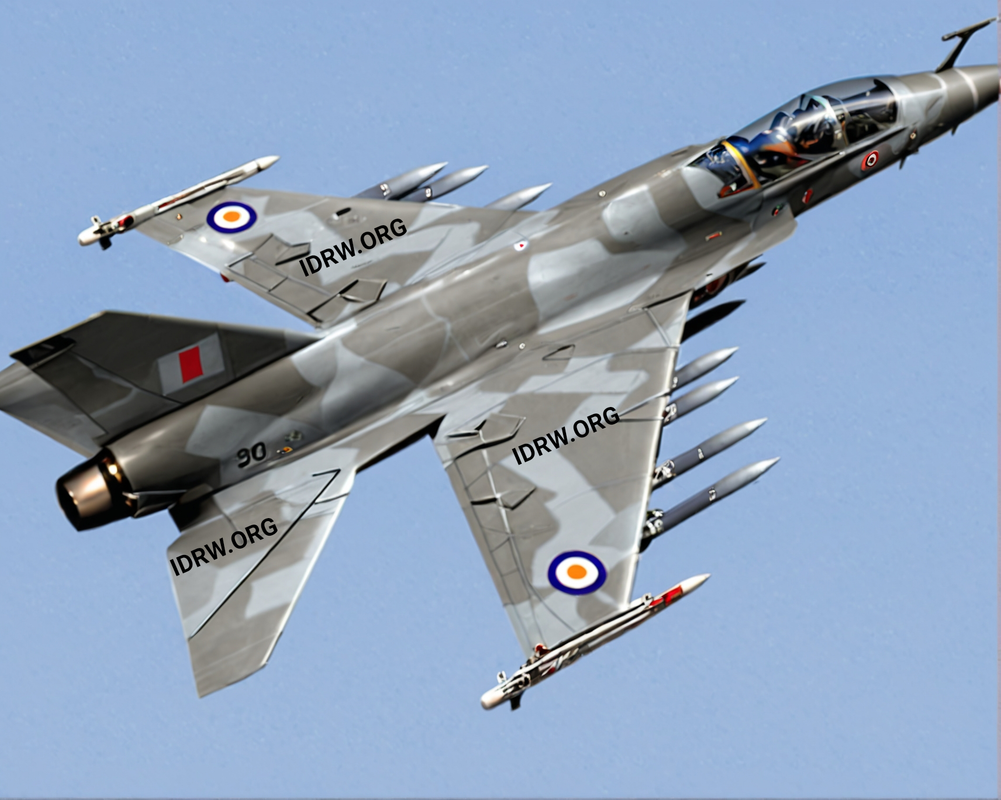SOURCE: RAUNAK KUNDE / NEWS BEAT / IDRW.ORG


Hindustan Aeronautics Limited’s (HAL) ambitious HLFT-42 program, introduced in 2023 as the “Next-Gen Supersonic Trainer,” is undergoing further design refinements. With plans for additional wind tunnel testing, HAL aims to fine-tune the platform, which captured widespread attention for its impressive capabilities and potential to meet both training and combat needs for the Indian Air Force (IAF).
The HLFT-42 is designed to be much more than a typical supersonic trainer. With a 4.5-ton weapon payload capacity and a 16.5-ton Maximum Take-Off Weight (MTOW), the aircraft promises to not only provide advanced pilot training for 4th and 5th-generation fighter jets but also serve as a light combat jet. This versatility offers the potential for multi-role missions, making the aircraft a valuable addition to the IAF’s fleet, particularly for combat teaming scenarios.
The HLFT-42 is envisioned to operate as both a trainer and a light combat aircraft, capable of performing in scenarios that require agility, speed, and firepower. Its capacity to carry a variety of weapons and perform advanced training makes it suitable for pilots transitioning to more advanced platforms such as the Tejas Mk2 or the future AMCA (Advanced Medium Combat Aircraft). The aircraft’s combat teaming potential—where it could operate alongside more advanced fighters—adds another layer of tactical versatility, especially in contested environments where cost-effective solutions are needed.
While the program is still in its development phase, HAL has continued to refine the design of the HLFT-42, with plans for further wind tunnel testing to ensure aerodynamic stability and performance. These refinements are critical as HAL aims to develop a prototype that can demonstrate the aircraft’s capabilities in both training and light combat roles. The initial prototype will rely on internal funding and incorporate components from HAL’s existing Tejas programs (Mk1A and MkII), further integrating the company’s established technologies.
One of the key unresolved challenges for the HLFT-42 is the engine selection. During Aero India, a HAL test pilot confirmed that the company is seeking an engine significantly more powerful than the F-414 engine currently used in the Tejas MkII program. Speculation points toward the use of the 110kN engine being developed for the AMCA program, though that engine is unlikely to be ready before 2035. This delay in engine availability adds complexity to the program’s timeline and may push back production schedules.
Despite its promise, sources close to the project suggest to idrw.org that HAL is not prioritizing the HLFT-42 program at present. HAL’s focus remains on more immediate programs like the Tejas Mk1A and MkII, as well as the forthcoming AMCA. The HLFT-42 program is still in its infancy, and even with decisions on engine selection and final configuration, a rollout date in the early 2030s is considered the most optimistic scenario based on current projections.
NOTE : Article cannot be reproduced without written permission of idrw.org in any form even for YouTube Videos to avoid Copy right strikes. Websites doing illegal reproductions will get DMCA and Legal Notices.